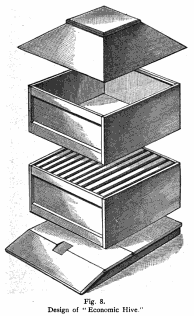flemage
House Bee
- Joined
- Jul 23, 2010
- Messages
- 329
- Reaction score
- 2
- Location
- South Devon uk
- Hive Type
- National
- Number of Hives
- 7 ish
Hi guys
Could any one point me in the direction of the original unmodified national hive plans? Had a look on the Dave C's web site but couldn't see any thing there.
I was hoping to set it up as an over winter project.
Many thanks
Simon
Could any one point me in the direction of the original unmodified national hive plans? Had a look on the Dave C's web site but couldn't see any thing there.
I was hoping to set it up as an over winter project.
Many thanks
Simon







 topbar definitely needs rebating on thornes & maisemore standards
topbar definitely needs rebating on thornes & maisemore standards